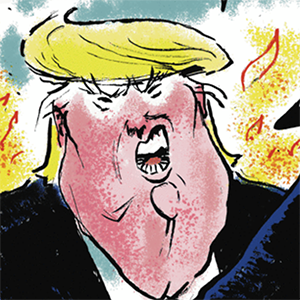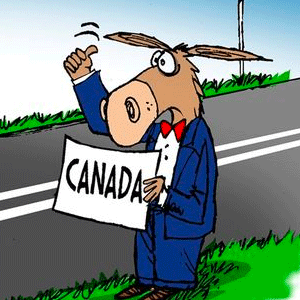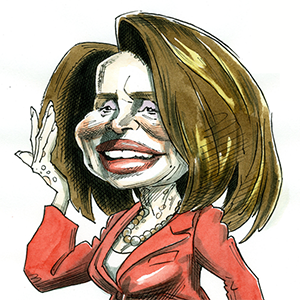Joining NATO binds countries to defend each other – but this commitment is not set in stone
Published in Political News
The outcome of the upcoming U.S. presidential election is going to have major consequences for the relationship between the U.S. and its allies. While President Joe Biden is a firm believer in the value of the transatlantic alliance, Republican contender Donald Trump has for years railed against U.S. participation in the North Atlantic Treaty Organization, the military alliance commonly referred to as NATO.
In February 2024, for example, Trump said that if he were reelected president, he would tell Russia to do “whatever the hell they want” against NATO members that are “delinquent” in not having invested enough in their own military capabilities. Foreign policy commentators viewed that as an invitation for Russia to attack these NATO countries.
In September 2022, six months after Russia’s full-scale invasion, Ukraine applied to join NATO. Now, Ukraine’s potential membership is one of the top questions that representatives from NATO’s 32 member countries in North America and Europe will consider when they meet in Washington in July 2024.
At the root of debates over policy toward alliances such as NATO is the assumption that NATO requires its members to step in and help with defense if another member of the alliance is attacked.
As political scientists who study the role of international organizations like NATO, we think it is important to understand that, in reality, alliance agreements are more flexible than people think.
In practice, it is possible for the U.S. and other Western countries to stay out of a conflict that involves a NATO country without having to break their alliance commitments. The NATO treaty’s language contains loopholes that let member countries remain out of other members’ wars in certain situations.
One key part of the NATO treaty that countries sign when they join the alliance is called Article 5. This says that an “armed attack” against one NATO member in Europe or North America “shall be considered an attack against them all.”
In the case of such an attack, NATO countries agree to assist the country that requires help, including through “the use of armed force, to restore and maintain the security of the North Atlantic area.”
But the treaty does not include a clear definition of a what an “armed attack” actually is.
This mattered in February 2020, when Turkey asked for a NATO meeting and requested that NATO intervene with military force in response to Russian and Syrian forces’ attacks on its territory, which had killed 33 Turkish soldiers, during the Syrian civil war. NATO allies chose not to defend Turkey with military force, arguing that the level of violence against Turkey wasn’t enough to call it an “armed attack.”
Even when NATO members decide that Article 5 should apply to a specific situation, each country can still individually decide how to act. That is, while NATO does have administrative staff based in Brussels, there is no central NATO authority that tells each country what it must do.
Instead, each country tells NATO what it is – and is not – willing to do.
NATO members have only formally invoked Article 5 once – following the Sept. 11, 2001, attacks on the World Trade Center and the Pentagon outside of Washington.
At that time, 13 NATO countries sent fighter aircraft to help the U.S. patrol its skies from mid-October 2001 to mid-May 2002.
But most NATO allies chose not to send troops to Afghanistan to support the U.S. in its fight against the Taliban. This lack of action on the part of some NATO allies was not seen as breaking the treaty and didn’t prompt a major debate – and the countries that chose not to join the fight were not sanctioned by or ejected from the alliance.
The NATO treaty also provides some exceptions based on geography. When Argentina went to war with the United Kingdom (a NATO member) over the Falkland Islands in 1982, the U.S. and other NATO members were able to use the fact that the alliance only applies to the North Atlantic region as a reason to stay out of the conflict.
Some political scientists argue that voters will demand their leaders take the country to war to defend an ally. This implies that what really binds the members of an alliance together is not the legal text of an international treaty itself, given that no international court is empowered to enforce the treaty, but rather the public’s expectations of what it means to be an ally.
As part of our research into how the American public thinks about international legal obligations, we decided to construct an experiment to see if presidents could use alliance loophole language to justify keeping the U.S. out of a war involving an ally.
In 2022 and 2023, we conducted a pair of survey-based experiments that involved asking nearly 5,000 American adults to consider a hypothetical scenario in which a U.S. ally comes under attack from a powerful neighbor.
Some of the respondents were told that the text of the alliance treaty would allow the U.S. government to avoid having to send troops to defend the embattled ally, while others were not told that information. Though the survey did not mention a specific alliance, we described the terms of the alliance in a way that matches the language used in treaties like NATO’s. We then asked the respondents to tell us their views on sending U.S. troops to defend the ally under attack.
Our results revealed a big difference between the people who were told about the flexibility in the alliance treaty and those who were not. While respondents from both groups were generally inclined to come to the defense of an ally, their willingness to do so was significantly lower when they were told that the alliance treaty did not necessarily require the U.S. to send troops.
This suggests that political leaders can, under certain circumstances, manage to convince a large segment of the public that it’s OK to abandon an ally in a time of need.
So, when it comes to debates about U.S. policy toward its alliance partners – and whether it should admit new members like Ukraine – it is important for both sides to appreciate that alliance commitments are not quite as binding, either legally or politically, as the conventional wisdom suggests.
This article is republished from The Conversation, a nonprofit, independent news organization bringing you facts and analysis to help you make sense of our complex world.
Read more:
Why the United States needs NATO – 3 things to know
What’s NATO, and why does Ukraine want to join?
Dan Reiter receives funding from the Charles W. Koch Foundation
Brian Greenhill does not work for, consult, own shares in or receive funding from any company or organization that would benefit from this article, and has disclosed no relevant affiliations beyond their academic appointment.


































































Comments